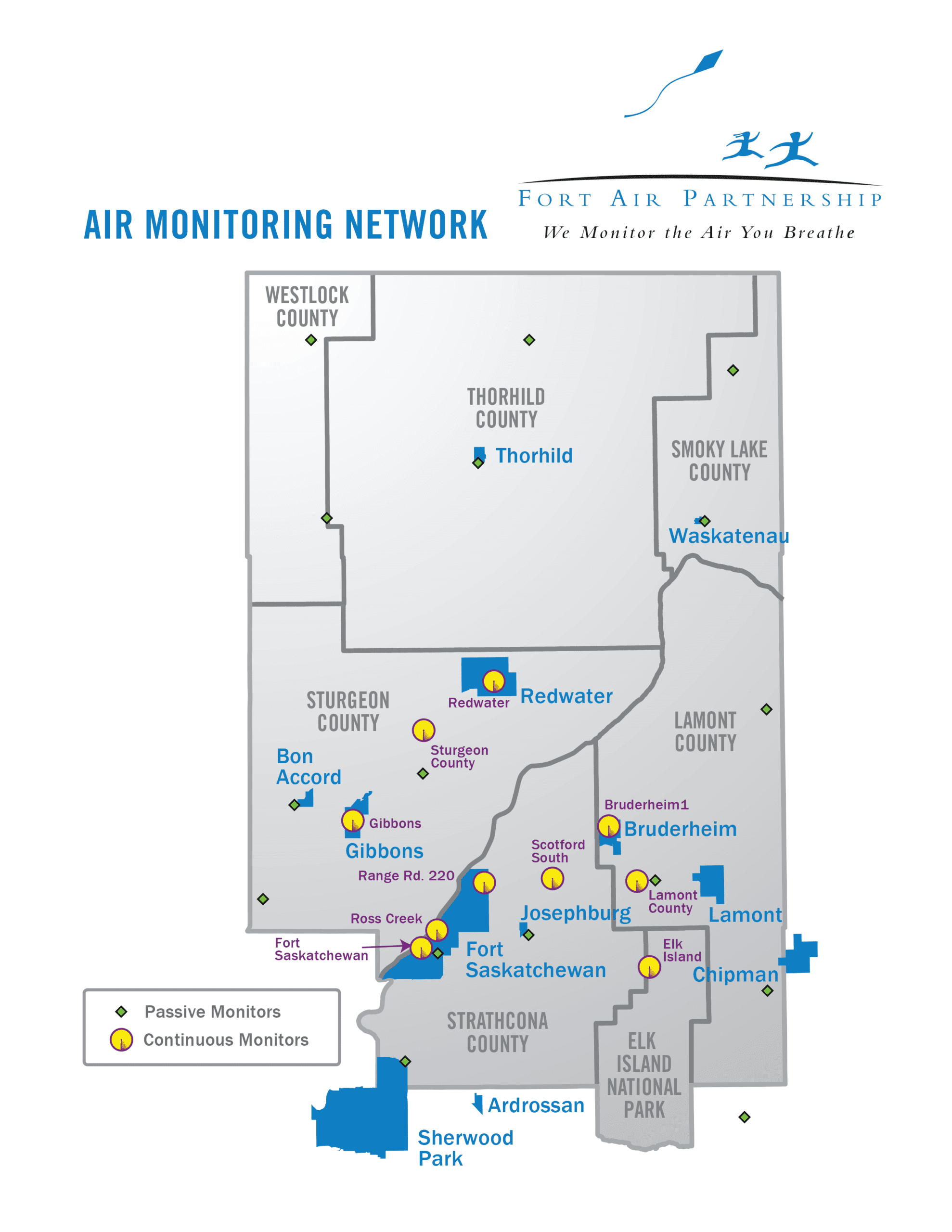Air quality in the Heartland is continuously monitored by the Heartland Air Monitoring Partnership. HAMP monitors and reports on 19 substances that are known to be emitted by various sources in the Airshed, as well as eight weather conditions like temperature, wind direction, wind speed, relative humidity and barometric pressure.
Data collected from HAMP’s 10 continuous monitoring stations and 16 passive monitors is used in a variety of ways. For example, data from seven of HAMP’s continuous monitoring stations is used to calculate a current and forecast Air Quality Health Index for the region. Data is also compared to provincial Ambient Air Quality Objectives, and used to inform policy and management decisions by government and other organizations.
HAMP’s work is open and transparent, governed by a multi-stakeholder Board of Directors, guided by a scientific Technical Working Group, and driven by national and provincial standards. Continuous data is collected 24 hours a day, seven days a week and made available to anyone via a live data feed and is published weekly, quarterly and annual reports.
HAMP has a variety of resources available to researchers, students, stakeholders and the public. The organization’s knowledge and expertise is shared through alliances with the Alberta Airsheds Council, Alberta Environment and Parks, Alberta Health Services, Environment and Climate Change Canada, industry, municipal government and other stakeholders. These contributions, combined with long-term monitoring strategies, ensure air quality in Alberta’s Industrial Heartland and surrounding region is closely tracked.
Air Monitoring for Industry
Industry is required to submit regular monitoring reports to Alberta Environment and Parks. For more information, visit https://www.ncia.ab.ca/our-environment/air. HAMP’s network includes 10 continuous air monitoring stations and 16 passive air sampling sites. HAMP produces data that help governments, industry, local residents.
- Portable Air Monitoring Station
- Air Dispersion Models
- Air Quality
- Emissions
- Environmental Cumulative Effects
- Exceedances
- How Air Quality Data is Used
- How Air Quality is Monitored
- Regional Airshed Monitoring
- Regulating Air Quality
Additional Resources
- Protecting Air Quality in the Heartland Fact Sheet
- Substances monitored by stations
- Airshed Network Map
- Live Data Feed
- Air Quality Health Index
To obtain further information on a variety of topics relating to air, please contact:
HEARTLAND AIR MONITORING PARTNERSHIP
General Inquiries: 1.800.718.0471 info@fortairmail.org
Alberta Environment and Parks
24 hr Environment Hotline: 1.800.222.6514
Input your information to subscribe to our newsletter
Input your information to subscribe to our newsletter


